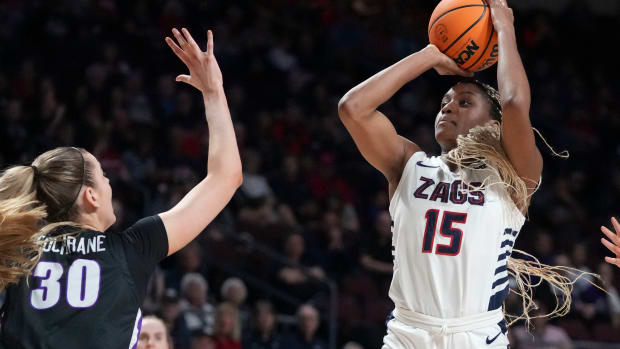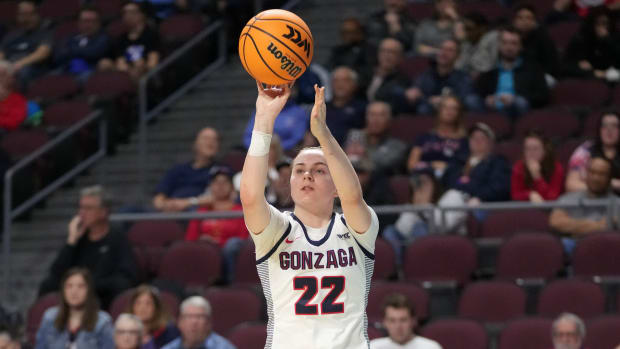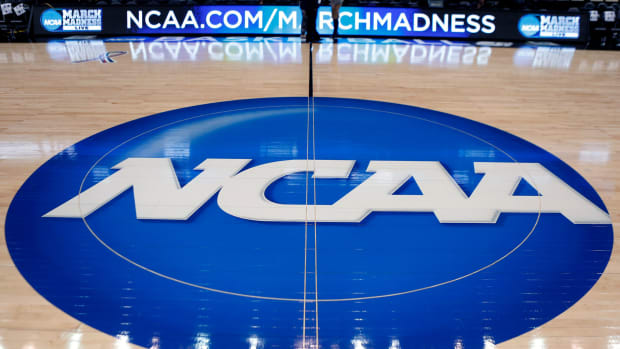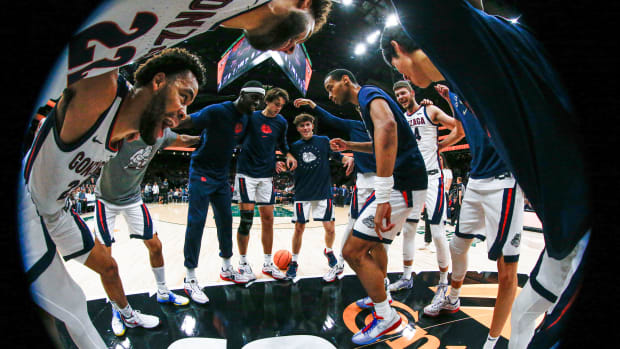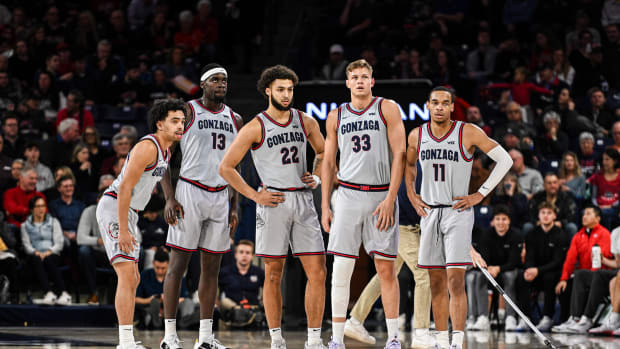How the proposed college football 'super league' impacts college basketball's future
The latest proposal to gain control and security in college athletics could result in a huge power grab from non-football schools
There has been a strong push for a new governing body to seize control of college football, gain control over NIL payments, the transfer portal and wipe the NCAA clean of future lawsuits aimed at the business of the sport.
As reported by The Athletic, a group called "College Sports Tomorrow" consisting of college presidents, college football executives and personnel from the NFL have outlined a system that would replace the current conference structure and College Football Playoff while also bringing in the idea of relegation. The plan outlined 70 programs from all Power Five conferences, plus Notre Dame and SMU that would be split into seven 10-team divisions. An eighth division of teams would be promoted from the "second tier" comprising 50-plus Division-I teams that aren't in a power conference, like the Mountain West Conference.
Those 50-plus non-power programs would have a chance to compete their way into the upper division, while the 70 permanent teams wouldn't be in danger of relegation. It's a similar structure to European soccer leagues.
The postseason would be decided much like the NFL playoff format — eight division winners plus eight wild card teams from the top tier would form a 16-team playoff. No more selection committees or ranking systems, just win-loss records and tiebreakers.
Additionally, universities would own a percentage of the so-called "super league," much like the revenue model of the MLS. The sport's top competitors like Alabama and Notre Dame would receive a larger slice of the pie. A union would represent the players on NIL, transfer portal and salary structure matters.
The idea of one entity overseeing college athletics' biggest revenue generator appears to have an answer for just about every problem surrounding the sport. But what does it mean for the future of college basketball?
College Sports Tomorrow has stated its proposed idea would create the finances needed for "non-revenue-generating sports to survive and thrive." That loosely includes golf, tennis, rowing, soccer, volleyball and baseball. College basketball drives a significant amount of revenue, even if it's less than football, though the proposed "super league" wouldn't translate to the hardwood.
For starters, there are over 360 Division-I college basketball programs compared to 130-plus FBS teams. The conference format works in basketball because of how the NCAA Tournament is structured to grant automatic bids for conference champions. A form of relegation and promotion in college basketball could work in theory, though a carbon copy of college football's "super league" format would risk altering what many consider to be the best postseason in U.S. sports.
So in a world where separate entities control basketball and football, how do leagues and schools that don't sponsor Division-I football survive? Namely: Gonzaga, the Big East and mid-major schools and conferences that are built on the success of men's and women's basketball.
The biggest issue for all the parties left out of the "super league" and its proposed benefits is funding for NIL. The details of how the revenue from TV contracts would trickle down through football to other sports isn't clear in the proposal, but nonetheless, it would provide stability and control over finances, which hasn't been the case this early into the NIL era. Some coaches, players and collectives have had a difficult time getting on the same page regarding player compensation.
The idea of financial security regarding NIL would take a lot of pressure off recruiting for those basketball programs that are funded through football's revenue. Coaches would offer a player an amount, and the player would have the reassurance that the program could pay that price tag. Along with the idea of a player union as representation on all matters.
As for the basketball-only entities, that financial blanket wouldn't exist. Collectives would still likely be in charge of generating NIL money and there wouldn't be as much governance regarding the transfer portal. Things would largely remain the same while other schools and leagues benefit from having Division-I football.
As for the Zags, joining a power conference would be necessary at that point. Discussions with the Big 12 have been on and off for a few years now, with a major obstacle being that Gonzaga doesn't have football to help generate revenue. But league commissioner Brett Yormark sees more value in college basketball than most do, which is why he's working on a proposition to create separate TV contracts for Big 12 basketball and football in the future.
That idea won't come to fruition if the "super league" is in fact on the horizon. If so, Gonzaga needs to figure out how to entice the Big 12's pro-football crowd into granting its membership before it risks getting left in the dust.
The Big East and mid-major conferences around the country would be put in a precarious situation when it comes to NIL funding. Obviously, that hasn't hurt the Big East to this point, though smaller leagues without football would almost certainly fade into irrelevance if more power and security is channeled to the "super league" and its members.
Don't get it twisted, though — the proposed "super league" is perhaps the most complete and comprehensive approach to resolving much of the NCAA's apparent issues in the NIL, transfer portal and legal arenas. Perhaps a basketball version of a "super league" is on the horizon.

